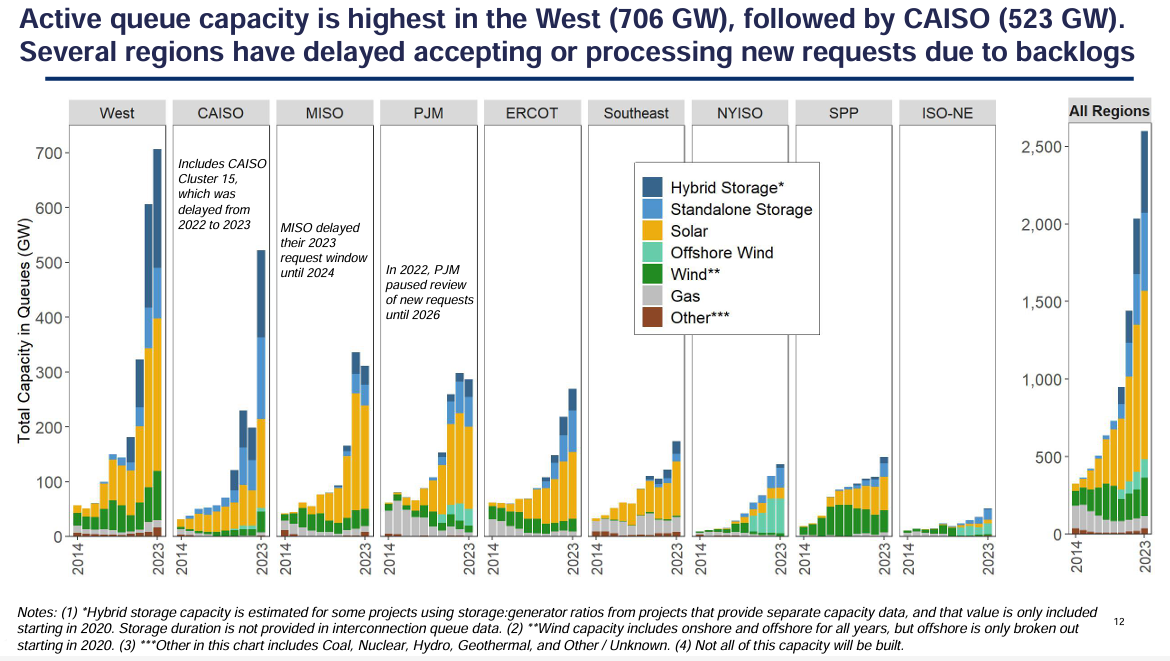Register
Technical
•
August 28, 2025
4:00 PM - 5:00 PM GMT
In this session, the Darcy research team will lead a technical forum focused on streamlining interconnection processes at both the transmission and distribution levels. The discussion will explore policy, planning, and technology solutions to reduce interconnection backlogs, an urgent need as DER and data center developers continue to run into grid capacity constraints.
Power & Utilities
Asset Management & Digitization
Connecting large-scale renewables and major energy users to the transmission grid has become one of the biggest roadblocks slowing down the clean energy transition. These delays are holding back developers from bringing new capacity online and preventing large-load customers, like data centers and industrial facilities, from getting connected to the grid.
As of 2024, over 2,600 GW of generation and storage projects were waiting in interconnection queues nationwide.
Source: Queued Up 2024, Lawrence Berkeley National Lab
Distribution-level queues are also swelling as customers adopt Distributed Energy Resources (DERs) faster than utilities can assess hosting capacity. As more customers seek to connect DERs like rooftop PV solar, electric vehicles, and heat pumps, utilities face mounting challenges evaluating and incorporating these resources cost-effectively without compromising reliability.
Federal policy changes, such as FERC Order 2023 (introducing cluster studies and fees early in the process) and Order 1920 (requiring long-term transmission planning), along with state-led initiatives, like California's Rule 21 and Minnesota's DER Interconnection Process and Agreement, aim to reduce excessive queue times. However, these reforms cannot succeed without modern software tools to handle the scale and complexity of required studies.
Technologies are being deployed today that can help. Modeling tools that can perform cluster studies, iterating power flow simulations and evaluating system impacts in near-real time, compared to the status-quo days-long studies, are set to transform the interconnection process. While real-time hosting capacity maps can deliver current grid visibility, replacing infrequent static updates with dynamic data to improve planning and decision-making. By automating these processes, utilities can provide developers with accurate cost and timeline estimates and better plan for future grid needs.
About the Innovators
GridUnity provides advanced interconnection management software for utilities, enabling automated model building, streamlined study processes, and online application portals for developers.
envelio offers the Intelligent Grid Platform that digitalizes and optimizes distribution grid planning and operations. It helps utilities integrate DERs by automating hosting capacity analysis and interconnection studies.
About the Audience
This session will cover deploying AI-based solutions within the power utility enterprise, with a focus on streamlining interconnection processes and enhancing grid planning. Engineers, program managers, project managers and others involved with grid planning (like transmission or distribution system planning) and/or operations (like control room activities such as DER management) are a strong fit for this event. Further, anyone with a data science, data analytics, business intelligence, or corporate strategy role will also likely benefit from how utilities are using software to streamline interconnections and reduce backlogs.


